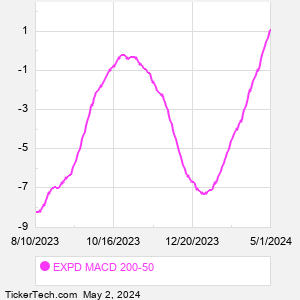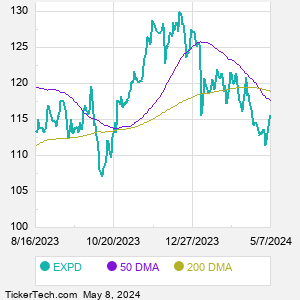Expeditors International of Washington provides a suite of global logistics services. As a third party logistics provider, Co. purchases cargo space from carriers on a volume basis and resells that space to its customers. Co. provides a range of transportation services and customer solutions, such as customs brokerage, order management, time-definite transportation, warehousing and distribution, temperature-controlled transit, cargo insurance, cargo monitoring and tracking, and other customized logistics and consulting solutions. In addition, Co.'s Project Cargo unit handles special project shipments that move via a single method or combination of air, ocean, and/or ground transportation.
When researching a stock like Expeditors International of Washington, many investors are the most familiar with Fundamental Analysis — looking at a company's balance sheet, earnings, revenues, and what's happening in that company's underlying business. Investors who use Fundamental Analysis to identify good stocks to buy or sell can also benefit from EXPD Technical Analysis to help find a good entry or exit point. Technical Analysis is blind to the fundamentals and looks only at the trading data for EXPD stock — the real life supply and demand for the stock over time — and examines that data in different ways. One of those ways is to calculate a Simpe Moving Average ("SMA") by looking back a certain number of days. One of the most popular "longer look-backs" is the EXPD 200 day moving average ("EXPD 200 DMA"), while one of the most popular "shorter look-backs" is the EXPD 50 day moving average ("EXPD 50 DMA"). A chart showing both of these popular moving averages is shown on this page for Expeditors International of Washington. Comparing two moving averages against each other can be a useful visualization tool: by calculating the difference between the EXPD 200 DMA and the EXPD 50 DMA, we get a moving average convergence divergence indicator ("EXPD MACD"). The EXPD MACD chart, in conjunction with the chart of the moving averages, basically helps in visualizing how the moving averages are showing convergence (moving closer together), or divergence (moving farther apart). |



